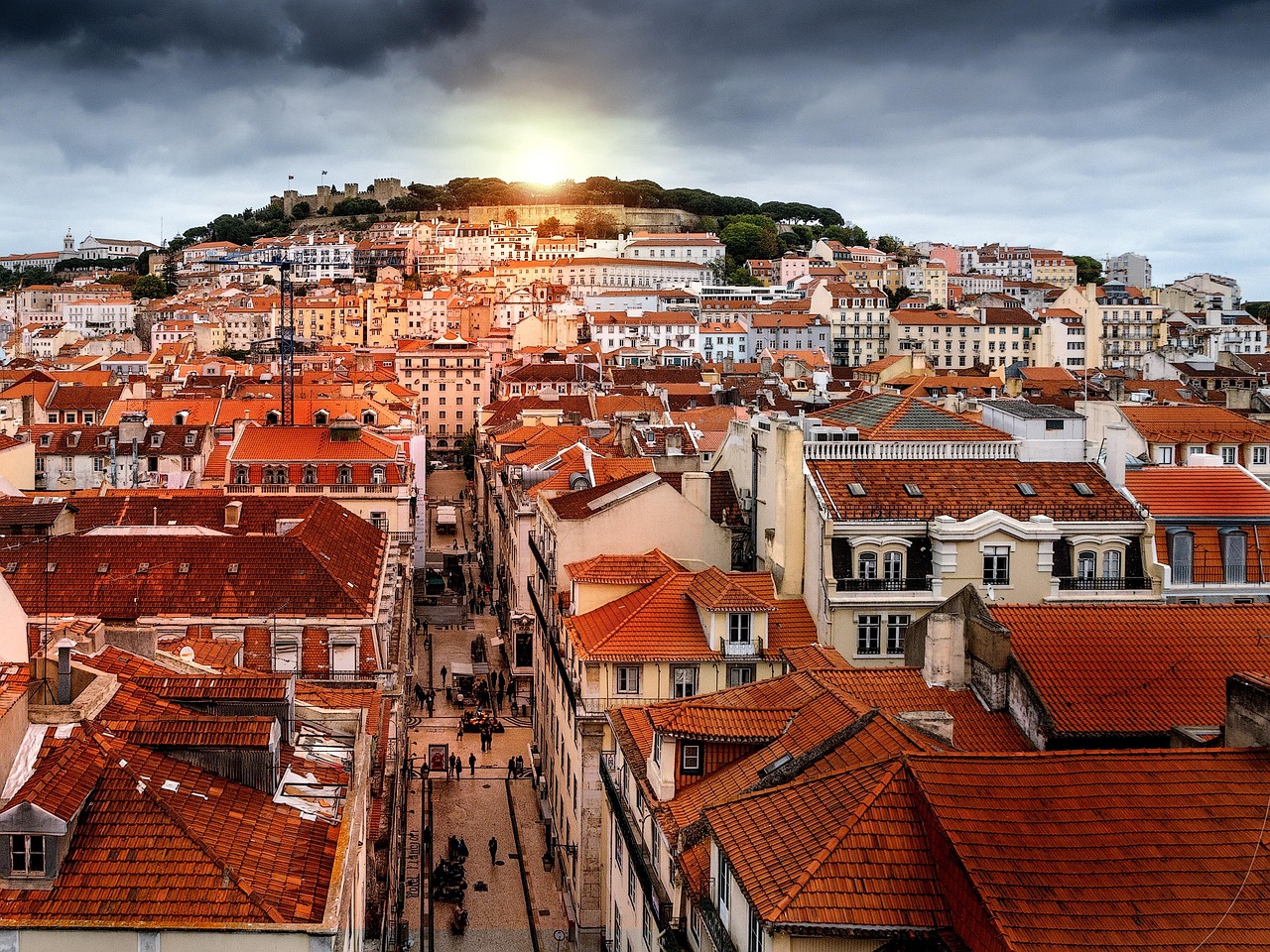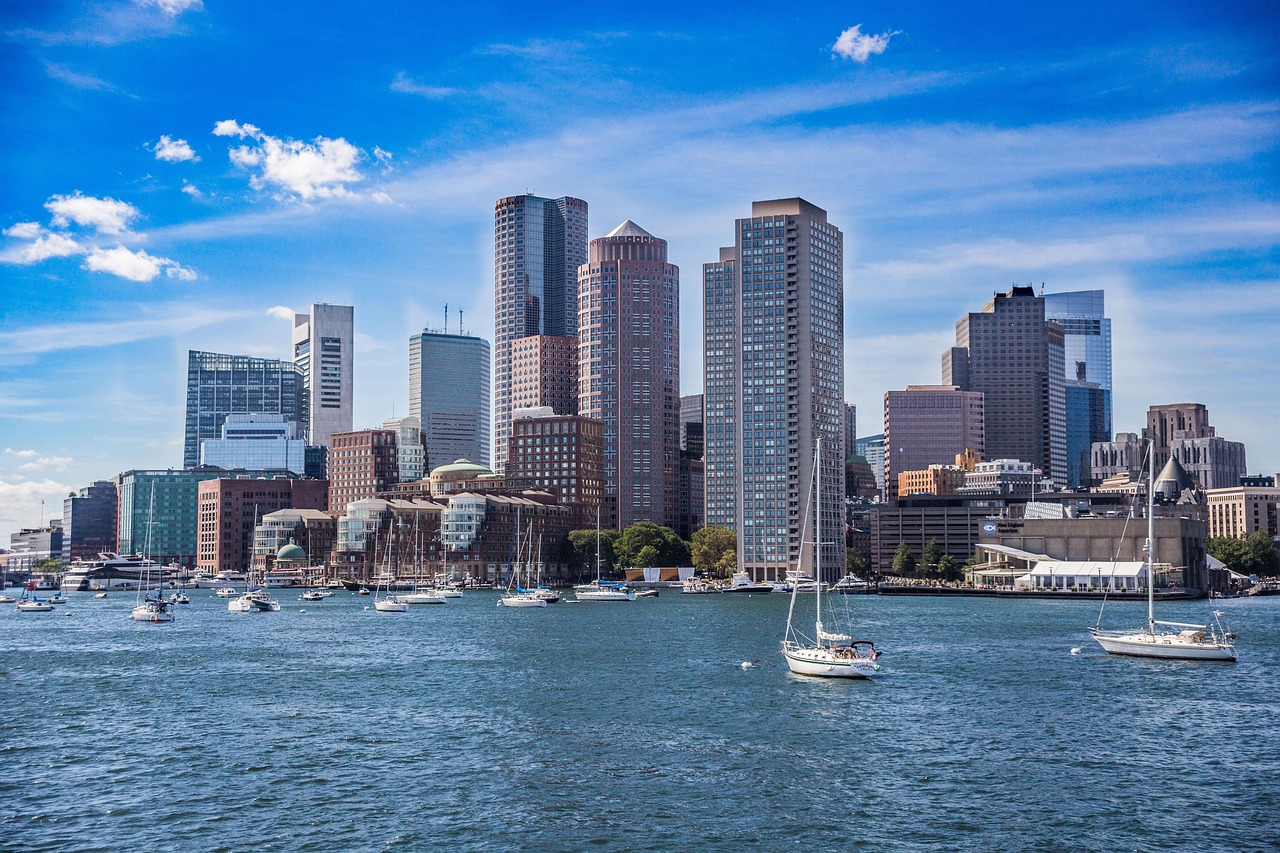
Planning a trip can be hard. Lisbon is full of history and beauty. This post will guide you through the best spots. Keep reading to discover more!
Key Takeaways
- Lisbon has historic sites like Castelo de São Jorge and Belém Tower that show its past.
- You can hear Fado music in neighborhoods like Alfama. This music is a big part of Lisbon’s culture.
- The city has many viewpoints, called Miradouros, where you can see beautiful views.
- Food in Lisbon includes treats like pastel de nata and seafood dishes such as bacalhau.
- Day trips from Lisbon let you explore places like Sintra with its fairy-tale palaces and Cascais by the sea.
Must-See Historical Landmarks

Lisbon’s history comes alive at its stunning landmarks. These sites tell the story of a city shaped by explorers and kings.
Castelo de São Jorge
Castelo de São Jorge stands high above Lisbon. This castle has watched over the city for centuries. It dates back to the 11th century. Back then, Moors built it to protect their land.
Today, visitors can walk through its ancient walls and towers. They enjoy stunning views of Lisbon from here.
The castle also has a museum. The museum shows off artifacts found on site. These include coins and ceramics from different times in history. Walking around, guests feel like they step back in time.
The peacocks walking in the gardens add to this feeling.
Mosteiro dos Jerónimos
Mosteiro dos Jerónimos is a big, beautiful building in Lisbon. It was built in 1501. People built it to thank Vasco da Gama for finding the way to India. The style of the building is very fancy and called Manueline.
This means it has lots of details from sea adventures, like ropes and shells.
This place is also where famous people from Portugal’s past are buried. Vasco da Gama himself is there, along with poets and kings. The monastery shows how important the sea was to Portugal long ago.
Visitors love walking through its big cloisters that have many arches. They say it feels like stepping back in time.
Belém Tower
Belém Tower sits by the River Tagus in Lisbon. People built it around 1514 as part of the city’s defense. It later became a lighthouse and a customs house. The tower shows off Portugal’s Discoveries era with its mix of Moorish, Gothic, and Romanesque styles.
Visitors often come here to see the beautiful architecture and learn about Portugal’s history. They can explore rooms that once held prisoners and look out from the top for great views of Lisbon.
This spot is key for understanding how important sea exploration was to Portugal long ago.
Panteão Nacional
The Panteão Nacional, also known as the National Pantheon, is a famous spot in Lisbon. It used to be a church but now it’s where Portugal honors its important people. Inside, you can see tombs and memorials of Portuguese presidents, poets, and singers like Amália Rodrigues.
The building looks very grand with a big dome and white walls. People can go up to the terrace for a great view of Lisbon.
Visitors often feel amazed by its beauty and history. After seeing the Panteão Nacional, many head to explore other parts of Lisbon.
Iconic Neighborhoods to Explore
Lisbon’s iconic neighborhoods, like Alfama and Bairro Alto, are full of life and history. Walk their streets to feel the city’s heartbeat. Keep reading to find out more about these vibrant areas!
Alfama
Alfama is Lisbon’s oldest neighborhood. It survived a big earthquake in 1755. This area has narrow streets that go up and down hills. Many people visit for its beautiful views and old buildings.
You can hear Fado music here, a special kind of song from Portugal.
In Alfama, tourists like to see the São Jorge Castle. They also enjoy walking around to find hidden spots with great views of the city and the Tagus River. The area is famous for small shops selling traditional Portuguese items.
Visitors often take tram 28 to explore Alfama easily.
Bairro Alto
Bairro Alto is a fun part of Lisbon. It’s known for its nightlife. Streets here fill up at night with people looking for good food and fun bars. During the day, it’s quieter but still worth visiting.
You’ll see old buildings and small shops.
This neighborhood also has great spots for views of Lisbon. Many visitors come to take photos and enjoy the scenery. Bairro Alto offers both a day-time charm with its history and a lively atmosphere when the sun goes down.
Chiado
Chiado is a busy and trendy area in Lisbon. It is famous for its historic cafes, theaters, and bookshops. Many travelers enjoy walking here. They see old buildings with beautiful designs.
People also like to shop in Chiado because it has many unique stores.
This place has been important for culture in Lisbon for a long time. After a big fire in 1988, Chiado was rebuilt. Now, it looks both old and new at the same time. Visitors often take photos of the mix of styles.
They also enjoy eating at local Portuguese restaurants found throughout the area.
Cultural Experiences in Lisbon
Lisbon’s culture shines in its music and arts. Listen to Fado’s deep tunes, or see the city’s walls tell stories through vibrant street art.
Listen to Fado music
Fado music is a must-hear in Lisbon. It’s a type of song that dates back to the 1800s. People sing about life, often feeling sad or longing for something. You can find it in small bars and restaurants throughout neighborhoods like Alfama.
Here, singers use their voices and guitars to share stories that touch your heart.
Many places offer live Fado shows where you can sit, eat, and listen. These spots give you a taste of true Portuguese culture. Listening to Fado is like taking a trip through Portugal’s history and emotions all at once.
Visit the LX Factory
After enjoying the soulful tunes of Fado music, a trip to the LX Factory is next on the list. This spot was once an industrial complex but has now been transformed into a buzzing hub of creativity.
It sits beneath the Ponte 25 de Abril bridge, adding to its cool vibe. Here, visitors find art studios, quirky shops, and trendy cafes all packed into old factory buildings.
The LX Factory also hosts events like markets and concerts throughout the year. It’s a place where you can see Lisbon’s modern side while still feeling its history in the old walls around you.
Every corner tells a story with vibrant street art and innovative designs. It’s perfect for those who love to explore unique spots in cities they visit.
Explore the local street art scene
Lisbon’s streets are like an open-air gallery. The city is famous for its vibrant street art scene. Artists from all over the world come here to leave their mark. You’ll see colorful murals and graffiti that tell stories about Lisbon, Portugal, and life itself.
Some key spots for this art include neighborhoods like Bairro Alto and Graça.
Local tours can guide you through these areas. They show you important works by artists such as Vhils, whose carved wall portraits are famous worldwide. Every piece adds something special to the city’s charm.
This makes walking through Lisbon a unique experience where every corner has a new surprise waiting for you.
Scenic Spots and Viewpoints
Lisbon’s scenic spots and viewpoints offer breathtaking views of the city. From high hills to historical elevators, every angle presents a new way to see Lisbon’s beauty.
Miradouros (viewpoints)
Lisbon is a city with breathtaking views. Miradouros, or viewpoints, are perfect spots to see the beauty of Lisbon and the Tagus Estuary.
- Miradouro da Senhora do Monte offers the highest viewpoint in Lisbon. Visitors can see the entire city and across to the Ponte 25 de Abril.
- Miradouro de Santa Catarina attracts both locals and tourists. Here, you can watch the sun set over the river.
- Miradouro das Portas do Sol provides a stunning view of Alfama’s rooftops. This spot is great for photos, especially in the morning light.
- Miradouro da Graça sits next to a charming church. People love it for its view of São Jorge Castle and downtown Lisbon.
- Miradouro de São Pedro de Alcântara is set in a garden. It shows off Bairro Alto on one side and the castle on the other.
- Parque Eduardo VII has a miradouro at its top end. From here, you look down on green hedges and Avenida da Liberdade, all the way to the Tagus River.
- The Ribeira das Naus waterfront promenade isn’t high up but gives close-up views of the Tagus Estuary boats passing by.
Each miradouro offers a unique experience of Lisbon’s scenic beauty, making them must-visit spots for travelers wanting to capture memorable sights of Portugal’s capital.
Parque Eduardo VII
Parque Eduardo VII is located at the peak of Avenida da Liberdade. Recognized as a substantial park in Lisbon, it’s named after Edward VII of England. Renowned for its lush greenery and exceptional cityscape views, it’s a favored place for individuals to stroll, unwind, and bask in nature amidst Lisbon.
Oftentimes, it is the venue for numerous events throughout the year. The Carlos Lopes Pavilion, a renowned location within the park, attracts many visitors. Additionally, the park is home to the Estufa Fria, a spectacular greenhouse garden housing diverse flora.
From this park, one can enjoy some of the most splendid views over Lisbon in the direction of the Tagus River.
Elevador de Santa Justa
Elevador de Santa Justa is a big lift in Lisbon. It was built in 1902 to help people move between the lower streets of the Baixa district and the higher Largo do Carmo. This lift stands out because it’s made of iron and has beautiful, detailed designs.
Riding this lift gives you a great view of Lisbon.
The lift is 45 meters tall. People love to take pictures here. The top offers a viewing platform with amazing views of the city. It connects downtown to Bairro Alto without walking up steep hills.
Each ride shows off Lisbon’s beauty from above.
Culinary Delights
Lisbon’s food scene is a journey of flavors, ready to surprise your taste buds and invite you on an unforgettable culinary adventure.
Try pastel de nata
Pastel de nata is a must-try treat in Lisbon. This egg tart pastry has a creamy center and flaky crust. It’s dusted with cinnamon and powdered sugar. People enjoy it any time of the day.
Bakeries across Lisbon sell pastel de nata, making it easy to find.
Some say the best ones are at Pastéis de Belém, near Jerónimos Monastery. This place has been making them since 1837. The recipe here is secret, passed down through generations.
Each bite gives you a taste of Portugal’s history and sweet culinary tradition.
Take a food tour
After enjoying the sweet taste of pastel de nata, dive deeper into Lisbon’s culinary scene with a food tour. It’s a way to explore local dishes and learn about the city’s culture through its flavors.
- Food tours in Lisbon take you through historical neighborhoods. You can walk around places like Alfama or Bairro Alto.
- Guides often share stories about Lisbon’s colonial history during these tours. This adds a layer of understanding to the food you eat.
- Many tours stop at local markets. Here, you get to see fresh produce and seafood that are staples in Portuguese cooking.
- Seafood dishes are a big part of the tour. Codfish and sardines are popular. You will learn how locals prepare them.
- Sampling wine is also included. Portugal is famous for its wines, especially Vinho Verde and port wine.
- Tours could visit hidden bakeries or cafes where traditional recipes are alive. You might try foods like cozido à Portuguesa or bacalhau.
- Some tours focus on street food, where you can try snacks like bifanas (pork sandwiches) from busy vendors.
- At each stop, guides explain the food’s history. They talk about how certain dishes came to be in Lisbon.
- Food tours last for a few hours. This gives enough time to enjoy each tasting without rushing.
- They usually have small groups. This makes it easier to hear your guide and ask questions.
- Taking a food tour supports local businesses too. It’s a direct way to help small shops and restaurants.
Enjoying Lisbon’s culinary delights opens up insights into its culture and people beyond what usual tourist spots offer.
Discover Lisbon’s seafood dishes
Lisbon sits by the sea, so seafood here is fresh and tasty. People love dishes like bacalhau (salt cod), which you can find in many different styles. Another favorite is sardines, especially grilled ones during summer festivals.
Chefs in Lisbon also make a great seafood stew called caldeirada, filled with whatever fish was caught that day.
Eating seafood in Lisbon lets you taste the ocean’s bounty. Try a dish called “ameijoas à Bulhão Pato,” clams cooked with garlic and cilantro. This dish shows how simple ingredients bring out rich flavors.
Each meal feels like a journey through Portugal’s coastal traditions, making dining an adventure for your taste buds.
Day Trips from Lisbon
Lisbon is your starting point for some amazing day trips. Just a short ride away, you can discover fairy-tale palaces in Sintra or relax by the sea in Cascais.
Sintra and Pena Palace
Sintra is a must-see day trip from Lisbon. It’s known for its stunning landscapes and fairy-tale castles. Pena Palace stands out with its bright colors and ornate details. This palace sits on top of a hill in the Sintra Mountains.
From there, visitors can see amazing views of the countryside.
Next up, think about heading to Cascais and Cabo da Roca for more adventure outside Lisbon.
Cascais and Cabo da Roca
Cascais is a small town near Lisbon. It has beautiful beaches and a nice old town area. People like to walk around and see the shops and restaurants. There is also a museum called the Casa das Histórias Paula Rego.
It shows art from a famous Portuguese artist.
Cabo da Roca is close to Cascais. It is the westernmost point of mainland Europe. Here, you can see amazing views of the ocean from high cliffs. Many visitors come to take pictures of the sunset and the lighthouse.
Next, let’s talk about Palácio Nacional de Mafra.
Palácio Nacional de Mafra
After visiting Cascais and Cabo da Roca, a trip to Palácio Nacional de Mafra is next. This palace is huge and old. It was built in the 18th century by King João V. The king used gold from Brazil to pay for it.
The palace has more than 1,200 rooms and also includes a big library with around 36,000 books.
The library in Palácio Nacional de Mafra is very special because of its old books. Some of these are the only ones left in the world. Also, there’s a colony of bats living inside that helps protect the books by eating insects that could damage them.
Visitors find this place amazing because of its history and beauty.
Unique Activities in Lisbon
Lisbon offers fun and one-of-a-kind activities for everyone. From taking a historic tram ride through the city to enjoying a sunset cruise along the Tagus River, these experiences make your visit truly memorable.
Ride the 28 tram
Riding the 28 tram is like taking a journey back in time through Lisbon. This iconic yellow tram goes through famous neighborhoods and tourist spots. It starts in Graça, then moves to Alfama, Baixa, and Estrela.
The ride offers views of Lisbon’s old streets and landmarks.
Many people enjoy this trip because it shows so much of the city from a unique view. The tram rattles along narrow paths that are hard for cars to pass through. You can see locals going about their day as you pass by shops and cafes tucked into small spaces.
Riding the 28 tram gives you a glimpse into Lisbon’s daily life mixed with its history.
Take a sunset cruise on the River Tagus
A sunset cruise on the River Tagus is a great way to see Lisbon. You can watch the city light up as the sun goes down. The bridges and monuments look beautiful from the water. This ride gives you a unique view of places like Belém Tower and Padrão dos Descobrimentos.
Boats leave in the evening, making it perfect for ending your day. You will feel relaxed as you glide over the water. It’s also a chance to take amazing photos that capture Lisbon’s magic at sunset.
Learn about Lisbon’s earthquake history
Lisbon faced a huge earthquake on November 1, 1755. This disaster also brought a tsunami and fires. Many buildings fell down, and thousands of people died. The city had to be built again.
This event changed how people build cities.
The quake hit in the morning when churches were full. It was one of the biggest quakes in history. Scientists say it was between an 8.5 and 9 on the Richter scale. Now, Lisbon has many spots where you can learn about this quake’s impact on the city and its rebuilding process.
Outdoor Adventures
Outdoor adventures in Lisbon promise excitement—from parks to beaches to surfing, there’s always something thrilling to explore.
Monsanto Park
Monsanto Park is a big green space in Lisbon. It’s known as the “Lungs of Lisbon” because it has lots of trees and plants. People go there to walk, bike, and enjoy nature. The park also has play areas for kids, picnic spots, and paths for walking your dog.
You can see the whole city from some parts of Monsanto because it sits on high ground.
Next up, let’s head to the beach!
Visit local beaches
Lisbon, the capital of Portugal, is known for its sunny weather and beautiful coast. Many travelers come to enjoy its beaches along the Tagus Estuary and Atlantic Ocean.
- Carcavelos Beach is a popular spot. It’s great for surfing and has lots of cafes.
- Estoril Beach offers calm waters. It’s perfect for families who want to swim.
- Tamariz Beach in Estoril is close to the train station. It has a medieval tower by the water.
- Cascais Beach is busy but beautiful. You can walk from here to other small beaches.
- Praia de Santo Amaro de Oeiras is wide and has a long promenade for walking or biking.
- Guincho Beach is windy and wild. It’s a favorite for kite surfers and windsurfers.
- Praia da Torre combines a beach with an old fort. This makes it unique.
- São Pedro do Estoril Beach has amazing rock formations. They are great for photos.
- Costa da Caparica stretches for miles south of Lisbon. It offers many beach spots.
- Fonte da Telha is less crowded. It gives a more local feel with fish restaurants nearby.
These beaches offer something for everyone, from surfers to families looking to relax by the sea.
Learn to surf
After enjoying the local beaches, you might want to try surfing. The area around Lisbon is great for this. Many schools teach surfing here.
You can find lessons for all ages and skills. Some places even rent out surfboards. This makes it easy for beginners to start. Surfing near Lisbon can be a fun adventure.
Museums and Aquariums
Lisbon is full of places where history and marine life come alive. The city’s museums and the Oceanário showcase this blend perfectly, inviting visitors to step into worlds of art, culture, and underwater wonders.
Oceanário de Lisboa
The Oceanário de Lisboa is a must-see in Lisbon. It’s one of the largest aquariums in Europe and shows off ocean life from around the world. Visitors can see everything from colorful tropical fish to sleek sharks.
There are four large tanks, each one showing a different part of the ocean. This place is not just fun but also teaches about ocean conservation.
Next up, let’s talk about Museu Nacional do Azulejo.
Museu Nacional do Azulejo
Museu Nacional do Azulejo is a unique museum in Lisbon. It shows the history of Portuguese tiles from the 15th century to today. These tiles are not just for decoration. They tell stories about Portugal’s past, culture, and people.
The museum is inside an old convent called Madre de Deus Convent, which started in 1509. You can see many beautiful tile panels there. Some are very big and colorful. This place helps visitors understand why tiles are so important in Portugal.
Calouste Gulbenkian Museum
The Calouste Gulbenkian Museum is a must-see in Lisbon for art lovers. It holds a mix of ancient and modern pieces. You’ll find works from the Middle East, Europe, and Asia. The museum has over 6,000 items, including rare books and paintings by Rembrandt.
It started when Calouste Gulbenkian shared his private collection with the world.
This museum stands out because it shows art from different times and places together. Visitors can see Egyptian statues next to French furniture or Persian carpets near European artwork.
This setup makes your visit interesting and unique.
Next on our list is shopping and souvenirs…
Shopping and Souvenirs
Shopping in Lisbon offers a unique chance to bring home a piece of Portuguese culture. From traditional ceramics to trendy boutique finds, every traveler can discover something special in the city’s markets and shops.
Shop for Portuguese ceramics
Portuguese ceramics are famous around the world. They show off beautiful colors and designs. Many shops in Lisbon sell plates, bowls, and tiles with these cool patterns. You can find a piece of art to take home as a souvenir.
Exploring local markets is fun. Here, you will see how artists make ceramics by hand. Each piece tells a story from Portugal’s history. Buying these helps support local craftspeople too.
Visit local markets
After exploring Portuguese ceramics, the vibrant local markets in Lisbon offer a unique peek into the city’s culture. These markets are where locals shop for food, crafts, and more.
- Feira da Ladra – This flea market has everything from antiques to handmade goods. It’s held every Tuesday and Saturday in Alfama.
- Mercado da Ribeira – Also known as Time Out Market, it’s a food haven with over 40 stalls selling Portugal’s best dishes. Located by Cais do Sodré train station, it’s open daily.
- LX Market – Held every Sunday at LX Factory, this market focuses on crafts, fashion, and vintage items. Food trucks offer tasty bites as you shop.
- Campo de Ourique Market – A neighborhood gem that combines traditional market stalls with modern eateries. Open every day but known for its gourmet spot to grab lunch while sightseeing in Lisbon.
- Feira do Relógio – The largest gypsy market in Lisbon happens every Sunday morning in the eastern part of the city. Find bargain clothes, shoes, and fresh produce here.
Each of these markets offers a different experience showcasing the rich variety of Lisbon’s shopping scene.
Explore boutique stores in Chiado
Chiado is a shopper’s delight. This area is full of small, unique stores. You can find Portuguese ceramics, handmade shoes, and fashion by local designers. The streets like Rua Garrett are lined with shops offering a mix of tradition and trend.
This place also has bookstores that have been around for centuries. For those who love to shop and explore the culture through shopping, Chiado offers an immersive experience. Now, let’s move on to nightlife and entertainment options in Lisbon.
Nightlife and Entertainment
Lisbon’s nightlife brings the city alive with rooftop bars, live music, and bustling nightclubs. Get ready to explore more!
Rooftop bars with sunset views
Rooftop bars in Lisbon offer great sunset views. They mix drinks with beautiful skies. You can see the Tagus Estuary and Ponte de Abril from high up. Places like Park Bar and Silk Club are famous for this.
At these spots, you get to watch the sun dip below the horizon.
Visitors enjoy cocktails as day turns into night. These bars often have DJs or live music. This makes for a fun evening out in Lisbon. From cozy to chic, there’s a rooftop bar for every taste here.
Live music venues
Lisbon loves live music, and the city offers many spots where travelers can enjoy it. Music Box in Cais do Sodré is famous for its vibrant scene. It hosts a mix of genres, from jazz to electronic.
Fans of indie and rock should visit Titanic Sur Mer, also in Cais do Sodré.
Another great spot is Hot Clube de Portugal. It’s one of Europe’s oldest jazz clubs. Here, visitors enjoy nightly performances by talented musicians. For those who like fado, Clube de Fado in Alfama offers an authentic experience with soulful performances.
Nightclubs in Bairro Alto
Bairro Alto in Lisbon is famous for its lively nightlife. The streets fill with people at night, looking for fun. Clubs here offer a variety of music, from traditional Fado to modern pop and electronic.
Most clubs are small but have a great atmosphere. They open late and close in the early morning hours.
People enjoy walking from one club to another because they are close to each other. Bars also offer drinks outside, so the party spills onto the streets. It’s easy to meet locals and travelers alike, making new friends as you explore different spots.
Seasonal Events and Festivals
Lisbon lights up with seasonal events and festivals that show its vibrant culture. From the soulful tunes at a Fado festival to the lively dances during June’s citywide celebrations, there’s always something festive happening.
Attend a Fado festival
Going to a Fado festival lets you hear Portugal’s soulful music. This music has deep roots in Lisbon. It started over 200 years ago. At these festivals, singers share stories of life, love, and loss through their songs.
The music often includes guitars too.
Many neighborhoods in Lisbon host these festivals throughout the year. Alfama is one famous spot for Fado. Here, both locals and visitors come together under the stars or in cozy bars to enjoy the performances.
Being at a Fado festival offers a unique way to connect with Portuguese culture and history.
Celebrate Lisbon’s June festivities
June in Lisbon is a time for big celebrations. The city comes alive with the Festas de Lisboa. Streets fill with music, dance, and food stalls. At night, colorful paper lanterns light up the sky.
People from all parts of Lisbon come out to enjoy parades and parties.
One special day during these festivities is Santo António’s Day on June 13th. Locals honor Saint Anthony, Lisbon’s patron saint. They set up altars and march in parades wearing traditional costumes.
Grilled sardines are a must-try food during this festival. Families gather for outdoor barbecues. Friends meet at makeshift stalls serving drinks and snacks.
Visit Christmas markets
After the lively June festivities end, Lisbon lights up again for the holiday season. The city hosts charming Christmas markets that draw both locals and visitors. These markets pop up in various spots across Lisbon, inviting everyone to enjoy the festive spirit.
They offer everything from handcrafted gifts to tasty local treats.
One of the most famous markets is in Rossio Square. Here, you can find handmade ornaments, warm winter food, and sometimes even a carousel for kids. Walking through these markets feels like stepping into a holiday postcard.
It’s a perfect way to experience Lisbon’s Christmas cheer and find unique souvenirs.
Conclusion
Lisbon has everything from historic sites to tasty food. You can see castles, listen to Fado music, and enjoy the beach. There’s lots to do outside too, like surfing and walking in parks.
Don’t miss the museums and local markets for shopping. Lisbon is a fun place with plenty to explore every day.
FAQs
1. What are some top attractions in Lisbon, Portugal?
Lisbon is a city full of charm and beauty. Some must-visit spots include the historic Belem Tower, the stunning Jeronimos Monastery, and the vibrant Alfama district.
2. Is it worth visiting the Oceanario de Lisboa?
Absolutely! The Oceanario de Lisboa is one of Europe’s largest aquariums. It houses an impressive variety of marine life and offers an unforgettable experience for all ages.
3. Can I explore Lisbon on foot?
Yes, you can! Lisbon’s compact layout makes it perfect for walking tours… You’ll get to discover charming neighborhoods like Bairro Alto and Baixa at your own pace!
4. Are there any unique experiences to enjoy in Lisbon?
Indeed! Try riding Tram 28 for a scenic tour around town or savoring traditional Portuguese pastries – Pastel de Nata – at local bakeries… These are just a couple of ways to immerse yourself in the culture of this beautiful city.







Leave a Reply